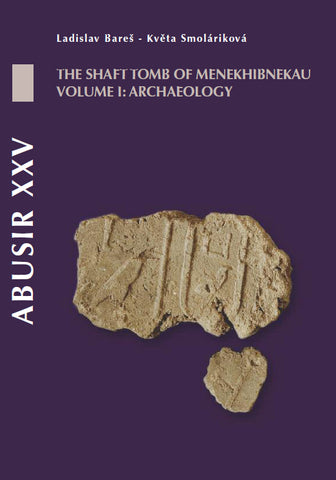Abusir XXV, The shaft tomb of Menekhibnekau – Vol. I: Archaeology
155,00 $ was 165,00 $
ISBN: 978-80-7308-380-9
Description: hardback, 360 pp. (30x21cm), 39 col. plates, 230 figs.
Condition: very good
Weight: 1300g.
Ladislav Bares, Kveta Smolarikova, Abusir XXV, The shaft tomb of Menekhibnekau – Vol. I: Archaeology, Charles University in Prague, Faculty of Arts, Prague 2011
The first volume includes the description of the archaeological situation and finds from the main burial chamber and the subsidiary shafts (L. Bares), including the embalmer’s deposit found in a separate shaft (K. Smolarikova). Separate chapters deal, among others, with the pottery (K. Smolarikova), the person of Iufaa and his family (L. Bares), as well as with the texts from the embalmer’s deposit (R. Landgrafova and J. Janak), Phoenician and Aramaic inscriptions on a Phoenician storage jar (J. Dušek and J. Mynarova) and xylotomic analysis of wooden objects from the embalmer’s deposit (J. Benes).
The tomb published in this volume is the third large Late Period shaft tomb that has been excavated in the south-western part of the Abusir cemetery. It belongs to Menekhibnekau, who held a number of important titles (among the "General", "Overseer of Libyans", "Overseer of the kbnwt-vessels", etc.) under Ahmose II and may have lived until the beginning of Dynasty 27. Although his tomb had been robbed, a number of important and interesting pieces from his burial equipment, including a seal of the necropolis and a faience menit with the name of Ahmose II, have been found in his burial chamber. In a separate shaft, large embalmer's cache has been found that contained more than three hundred large storage vessels and a number of smaller receptacles of different kind. On many of them, short inscriptions were preserved that often mention materials used during the mummification process including the presupposed dates of their use. In the excursi, texts from the embalmer's deposit, Phoenician and Aramaic inscriptions on a Phoenician storage jar and a xylotomic analysis of wooden objects from the embalmer's deposit are published.

